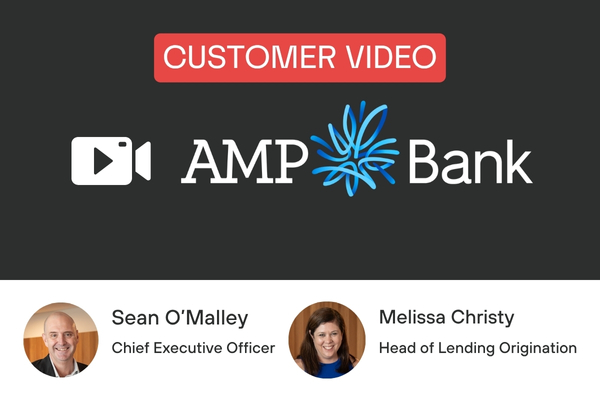Jan 22, 2023
Can income verification be automated?

Income verification and other manual document reviews have long been a bottleneck for mortgage, credit card and personal loan applications. Can technology automate this difficult but critical application processing step?
Let’s talk income verification.
Every day we meet leaders who are on a mission to grow their organisation by automating the verification of income documents. For many, payslips, bank statements and tax assessments are the key proof of income documents which, if they could be automatically verified, would provide measurable gains to borrower/broker/banker experience, reduce processing costs and decision time.
If you’ve dealt with a bank, lender, insurer or even a property manager, whether as an employee or a customer, you’re probably familiar with the slow and often frustrating experience associated with processing income documents, such as payslips, for an application.
As an employee it’s slow and tedious to manually verify the information on an income document, and as a customer, you’re having to wait days to get a response on your application.
Automating data extraction and document classification can help, however, without analysing documents for fraud, the risk of fraud and ultimately the number of poorly performing loans increases. To determine if both verification and fraud checks can be automated, and accelerated, let’s look at each step in the document review and verification process.
Typical manual steps to verify income documents
Manual income verification is much more than just ‘reading a document’. It includes any combination of a series of steps, which are sometimes performed by different teams within an organisation:
- Document classification and completeness checks: reviewers make sure that all of the right documents are collected.
- Data extraction for use in systems: necessary data points – such as income – are matched to (or entered into) application systems and used there to feed decision engines.
- Policy checks: Once the income data is collected, credit analysts make sure the documents meet credit policy:
- the name on the document matches that of the application
- the document appears to be provided by a legitimate employer or issuer and
- the document is not too old
- Cross-validation checks: the credit analyst performs checks such as validation of the registered business (e.g. ABN lookup), bank account information validation on payslips, or categorising bank statement transactions to detect income and expense-related transactions.
- Fraud checks: Fraud is always a concern in Financial Services so it’s usually up to the credit analyst to look out for falsified or fabricated documents and to make sure a genuine document has not been altered. Manual document fraud reviews are a common bottleneck for the speed at which income documents can be processed and often document fraud goes undetected until it’s too late.
- Redaction: Finally, analysts will often need to manually redact sensitive information such as credit card numbers or tax file numbers.
Based on feedback from our clients, performing these activities for each applicant can range from 9 to 20 minutes and upwards. The potential time- and cost-saving benefit for any organisation that is manually verifying large volumes of these documents is therefore substantial.
Can OCR solutions help with classification and extraction?
Income documents (such as payslips) do not follow set formats and layouts, due to the varying organisations and employers that issue these documents (such as small businesses). There is also a misconception that bank statements are highly standardised, when in reality each bank has a different statement which varies based on the product they offer (i.e. a Home Loan Statement is different to a Deposit Account statement, which is different again to a Credit Card statement). Income documents are often merged with multiple other documents into a single PDF.
The OCR challenge
When automating the extraction of data from semi-structured documents such as payslips, the challenging part is not converting image to text or so-called Optical Character Recognition (OCR). That’s easy, given there are many commercial and open-source options in the market at low costs.
The main ‘data extraction’ challenge is accurately labelling the data points within these documents, such as “Pay Date” or “Net Pay”. It can become an unsurmountable challenge to achieve very high ‘labelling accuracy’ for certain income documents, such as payslips, which come in countless formats, are always changing and sometimes are simply difficult to read (e.g. when your end-customers are tasked with finding the best lighting and angle over the kitchen bench to take a photo of their payslip).
In a nutshell: when there are thousands of organisations and employers that issue these documents in ever-changing formats, OCR solutions can tell you every word and number on those documents, but they cannot reliably tell the difference between the ‘net pay’ and ‘gross pay’ amount with sufficient levels of accuracy needed for automation at scale.
The varying formats also pose a challenge for reliably classifying (detecting) a payslip – and telling it apart from other documents that might be included in the same file. For example, a broker may submit a single PDF file to a lender that includes the entire set of application documents, where the payslip is buried on page 27 of this 42-page document.
Ongoing maintenance effort
Our customers often share their journeys about having spent months creating countless templates and training their OCR solution, only to achieve underwhelming and unreliable automation outcomes – and realising that the ‘monster’ they have built will require a significant team to maintain and ‘feed’ it with ever-changing up-to-date templates.

The sunk cost into such solutions can be significant by the time they come to us for help, and they often ignored the other steps in the document review process.
Fraud detection and other verification checks
Automating data extraction and document classification without analysing documents for fraud increases the risk of fraud losses and ultimately the number of poorly performing loans. To prevent this, we need to codify fraud tests that are traditionally performed by humans into digital algorithms – and ideally improve on manual checks to also detect instances of fraud the human eye cannot see.

Example fraud indicators of financial documents, such as payslips and bank statements
Similarly, other verification checks, such as cross-validation checks and policy checks, will also need to be performed by the engine. Many lenders underestimate or omit the design and build effort required for this.
Checks that are applicable to a specific document type, say a payslip, often differ from those applicable to another document type, such as bank statements. In addition, separate fraud checks must be developed for images, scanned files, and digital PDFs. To this end, automating fraud detection is an extremely challenging task – especially considering that it must be designed in such a way to maximise the ‘true positives’ (detecting actual fraud reliably) while minimising ‘false positives’ (too many false alerts creating noise).
Fortiro’s solution to automated document verification
Organisations can reduce operational costs and processing times using Fortiro’s verification products, allowing them to improve the customer experience and even pass on savings to customers.

Fortiro is a unique “Document-verification-as-a-Service” solution, purpose-built to automatically perform all common verification steps, including detecting fraud in proof of income documents. Fortiro’s architecture combines image forensics, machine learning, optical character recognition, natural language processing and data analytics to automate these review steps. This means organisations can rely on Fortiro to maximise automation and “straight-through-processing” of documents, while minimising fraud risks.
Fortiro is different to OCR
The illustration above shows the key verification features and capabilities of Fortiro as a service. Note how OCR is a component of the diagram, not the solution to achieve the goal.
To achieve the highest rates of accurate data extraction, Fortiro uses three dimensions of information (the text, the image, and the location or structure of text) combined with Machine Learning models and heuristic-based templates to extract and label data points. This proprietary approach allows Fortiro to achieve best-in-class classification and accuracy that traditional OCR solutions cannot match.
Moreover, Fortiro enriches the extracted information with 3rd party data sources required for effective verification of income documents (e.g. ABN lookups) and offers automated matching (such as matching the applicants name to a document), policy checks (such as detecting payday-lending on bank statements), performs cross-checks (such as matching declared income to a payslip) and insightful analytics (such as transaction analytics on bank statements to derive applicant income and expenses).
Importantly, Fortiro Protect is equipped with more than 100 proven fraud rules designed for different lending documents and file formats. The rules are fully configurable via a simple web-based user interface to support automated decision making – and allows in-house fraud teams to focus on those documents that Fortiro Protect has flagged as high risk. Based on the risk appetite and capacity of fraud teams, alerts can be configured to meet different preferences.
Why banks and lenders choose Fortiro
Increase market share while minimising fraud losses without the need to invest capital to build in-house solutions that are expensive to maintain. In addition, they benefit from:
- Reduced operational costs and processing times
- Access to collective fraud intelligence
- Traditional benefits of automation, such as reduced human error in data entry
- Fast and easy integration with existing and new systems via Fortiro’s simple and easy-to-use API
- Economy of scale by using an industry utility that provides regular feature updates and accuracy improvements
- Access to collective fraud intelligence
- Leading security- and privacy-by-design approach of Fortiro
Get a demo today
Get a demo of Fortiro’s income document verification platform to see how it can help you.


